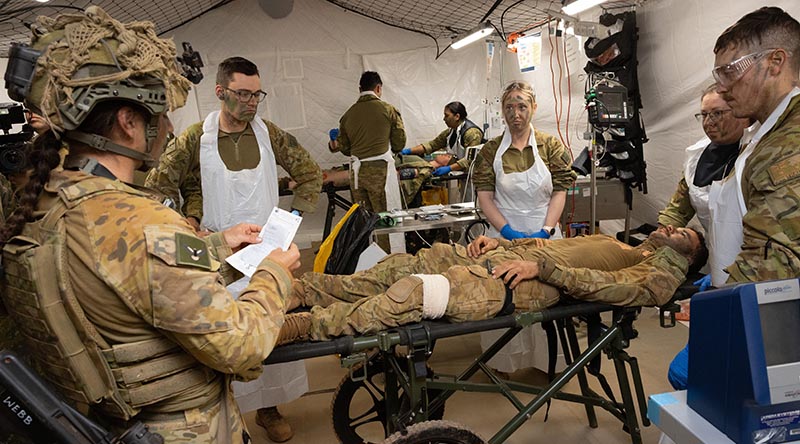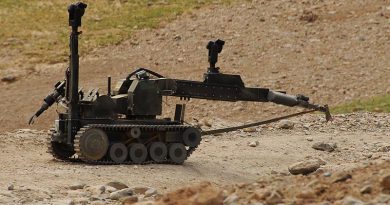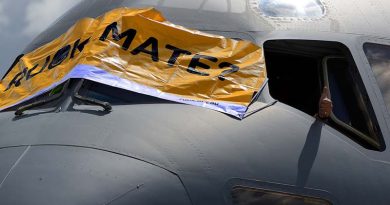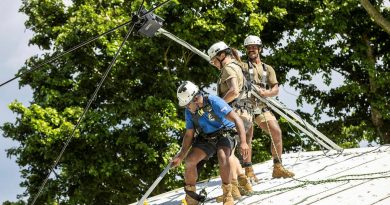Testing deployable hospital close to front line
Share the post "Testing deployable hospital close to front line"

Soldiers could be less likely to succumb to battlefield injuries thanks to a new manoeuvrable surgical medical-treatment facility that operates closer to the front line.
CAPTION: Australian Army medical specialists receive a simulated casualty in the Role 2 Basic resuscitation bay during Exercise Rhino Run at Cultana Training Area. Story and photo by Sergeant Matthew Bickerton.
Deployed on Exercise Rhino Run in May, the Role 2 Basic facility fits into two 6m containers and can be situated as far forward as a combat service support team.
It can receive patients within an hour of set-up and reach full surgical capability within three hours.
In contrast, a fully operational Role 2 Enhanced facility can take up to four days to establish.
Medical officer Captain Max Fulton, 3rd Health Battalion, said they could provide life-saving treatments where and when needed most.
“We have nine types of damage-control surgeries we are comfortable performing here with the equipment we have,” he said.
“Procedures that buy time for typical injuries sustained in large-scale combat operations.”
The facility comprises four purpose-built tents in a cross configuration.
Patients are cleared through a control point and then taken to the resuscitation bay where they receive immediate treatment.
From there, they proceed to surgery if required, followed by the ward for observations.
“It’s crucial to get patients stabilised enough before transferring them to a higher-level facility,” Captain Fulton said.
Role 2 Basic can manage resuscitation for two priority-one casualties, accommodate one patient in surgery while caring for two ICU patients in the ward, and has five low-dependency beds.
Known for its dusty landscape, Cultana Training Area hosted the 9 Brigade-led Exercise Rhino Run.
Nursing officer Captain Chanel Aguilar, 3rd Health Battalion, said a challenge in the Role 2 Basic’s operation was minimising infection.
“It’s not just dust from the environment or people walking in and out, but patients who’ve come from the field,” she said.
“The substantial cleaning load requires all clinicians to take dual roles in maintaining the facility’s hygiene.”
The hospital deploys a sterilisation department to ensure continuous sterilisation of equipment, while antibiotics help manage infections.
“We accept a greater degree of risk being so far forward, but if we didn’t do the surgery here, our patients could die,” Captain Fulton said.
The Role 2 Basic creates a stop-gap, according to Captain Aguilar, which brings surgery forward to critical parts of the battlefield.
“It’s aimed at damage-control resuscitation and damage-control surgery rather than prolonged preservation surgeries,” she said.
Initially scheduled for completion by 2025, the Role 2 Basic concept came online two years early by using new and legacy equipment.
“We’ve proved the concept works and that we are a tool that keeps people in the fight,” Captain Aguilar said.
Captain Fulton said they were invested in having something mobile.
“We want soldiers to know we want to be as close to them as possible, giving them that opportunity for life-saving surgery,” Captain Fulton said.
.
.

.
.
Share the post "Testing deployable hospital close to front line"





